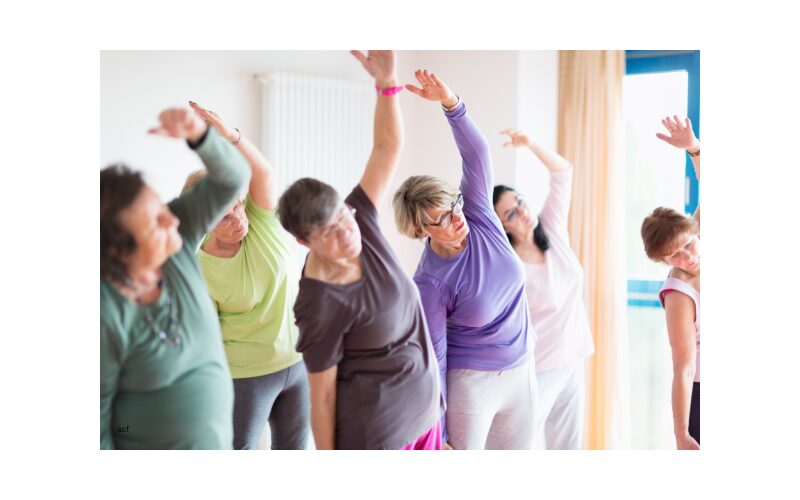Joint pain—it’s the uninvited guest that often comes with age. Suddenly, tasks like walking up stairs or bending down to pick something up feel like monumental challenges. But here’s the good news: moving your body, even when it feels counterintuitive, can actually help ease that pain. The key is knowing how to exercise in a way that supports your joints rather than aggravates them. Let’s chat about the best ways to stay active and feel better while keeping it gentle on those precious joints.
1. Understanding Joint Pain and Why Movement Helps
Why does joint pain happen?
For many seniors, joint pain is caused by wear and tear over the years, often due to osteoarthritis. Other culprits like rheumatoid arthritis or past injuries can also make moving a challenge.
How does exercise help?
Moving may seem like the last thing you want to do when you’re aching, but it’s essential. Exercise strengthens the muscles around your joints, improves flexibility, and increases blood flow, which can reduce stiffness and inflammation.
The magic of gentle movement:
The key is low-impact exercises—these don’t put unnecessary strain on your joints. Instead, they keep your body moving in a safe and supported way, helping to alleviate pain over time.
2. Low-Impact Exercises to Keep Your Joints Happy
When it comes to working out with joint pain, think “gentle but effective.” Here are some great options:
1. Water Aerobics
- Why it works: The buoyancy of water supports your weight, relieving pressure on your joints.
- What to do: Join a water aerobics class or simply walk in the shallow end of a pool.
2. Walking
- Why it works: It’s accessible, effective, and keeps your joints moving without overloading them.
- Pro tip: Stick to flat surfaces and wear supportive shoes.

3. Cycling
- Why it works: Whether it’s on a stationary bike or outside, cycling is easy on your knees and hips while improving strength and stamina.
- Pro tip: Start with 10–15 minutes and gradually increase your time.
- Why it works: Perfect for anyone with limited mobility, chair exercises allow you to strengthen your muscles while staying seated.
- Try this: Leg lifts or seated arm curls with light weights.
5. Yoga and Tai Chi
- Why it works: These practices focus on flexibility, balance, and relaxation. They also improve posture and reduce stress on joints.
- Pro tip: Look for senior-friendly or beginner classes.
6. Stretching
- Why it works: Stretching reduces stiffness and improves your range of motion.
- Simple stretches: Try a gentle hamstring stretch or shoulder rolls to loosen up.
3. Specialized Exercises for Arthritis Relief
For seniors managing arthritis, movement is medicine—but it needs to be tailored to your specific needs. Here are some arthritis-friendly exercises:
1. Range of Motion Exercises
- What they do: These exercises gently move your joints through their full range of motion, reducing stiffness.
- Try this: Slow arm circles or ankle rolls.
2. Strength Training
- Why it helps: Building muscle around your joints provides extra support and stability.
- What to use: Light dumbbells or resistance bands. For example, bicep curls or wall push-ups.
3. Aquatic Therapy
- Why it’s effective: The water’s resistance provides a gentle way to build strength without stressing your joints.
- What to try: Water jogging or pool-based resistance exercises.

- Why it’s helpful: Improves cardiovascular health while boosting joint mobility.
- Options: Elliptical machines or dancing to low-tempo music.
5. Gentle Yoga
- Why it works: Yoga reduces inflammation and improves flexibility.
- Suggested poses: Cat-Cow Stretch (great for the spine) or Child’s Pose for a calming stretch.
6. Foot and Hand Exercises
- Why they’re needed: Arthritis often affects smaller joints, like fingers and toes.
- Try this: Squeeze a stress ball or stretch your toes by flexing and pointing them.
4. Crafting Your Personalized Joint-Friendly Fitness Plan
Now that you know the types of exercises that work best, it’s time to create a plan that fits your lifestyle and needs. Here’s how to get started:
1. Talk to Your Doctor
Before starting any new routine, have a conversation with your healthcare provider. They can guide you on what’s safe based on your condition and fitness level.
2. Set Realistic Goals
Start small. Aim for 10–15 minutes a day and gradually increase your time and intensity. Consistency is more important than overdoing it.
3. Mix It Up
Incorporate a variety of exercises—strength training, cardio, and flexibility work—to keep things interesting and well-rounded.
4. Listen to Your Body
Pain is your body’s way of signaling something isn’t right. If an exercise causes discomfort, stop immediately and modify or try something else.
5. Make It Social
Join a class or find a workout buddy. Exercising with others keeps you motivated and makes the experience more enjoyable.

6. Celebrate Small Wins
Did you walk an extra five minutes today? Did you try a new stretch? Celebrate these milestones—they’re steps toward better health.
5. Tips to Keep Moving and Stay Motivated
Starting an exercise routine is one thing; sticking to it is another. Here are some tips to stay on track:
1. Choose Activities You Enjoy
If you hate running, don’t run. Love dancing? Put on your favorite tunes and move. The more you enjoy the activity, the more likely you are to keep at it.
2. Schedule It In
Treat exercise like any other appointment. Set a specific time each day and stick to it.
3. Track Your Progress
Keep a journal of your workouts or use a fitness app. Seeing your progress over time is incredibly motivating.
4. Reward Yourself
After reaching a goal, treat yourself—whether it’s a new pair of walking shoes or a relaxing massage.
5. Stay Comfortable
Wear supportive footwear, use cushioned mats, and ensure your workout space is safe and clutter-free.
6. Stay Positive
Remember, every small step adds up. Focus on what you can do, not what you can’t.
Conclusion: Moving Toward a Pain-Free Future
Joint pain doesn’t have to stop you from living an active and fulfilling life. With the right exercises, a personalized fitness plan, and a bit of determination, you can stay mobile, reduce pain, and even boost your mood. The key is to start slow, listen to your body, and enjoy the process.
So, let’s keep moving, one gentle step at a time. Your joints will thank you, and your future self will too! Ready to give it a go? Let’s make this journey to better health a joyful one.

My name is Larry, and I’d like to thank you for visiting Senior Citizens Fitness. I’m so passionate about staying fit in my later years. I hope you found some useful information here. Thanks again, and please subscribe and leave comments.
Larry Mac


